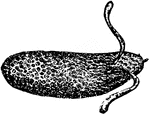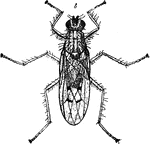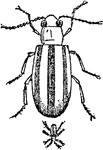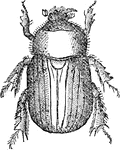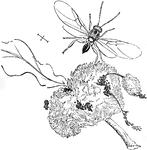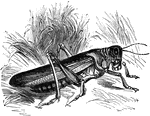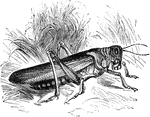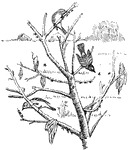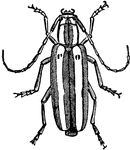
Larva of Perla Marginata
"An insect among the Neuroptera, which undergo incomplete metamorphoses. These flutter about the banks…

Cordycep
The Sphaeria sinensis a cordycep, a parasitic fungus. "The right hand figure represents the manner in…

Cordycep
The Sphaeria Robertsii a cordycep, a parasitic fungus "growing from the caterpillar of a New Zealand…

Mole Cricket
The mole cricket (Gryllotalpa vulgaris) is an insect named for their highly developed forelimbs and…

Leaf Insect
The leaf insect or walking leaf is an insect that has the appearance of a leaf from the family Phylliidae.
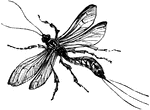
Ichneumon Wasp
The Ichneumon wasp is a parasitoids, where the larvae feed on another insect until it dies.
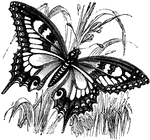
Swallowtail Butterfly
The swallowtail butterfly (Papilio machaon) is a large colorful butterfly with atleast 550 species.
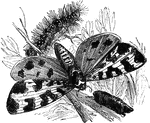
Tiger Moth
The garden tiger moth (Arctia caja) is named for the different and colorful patterns on its wings.
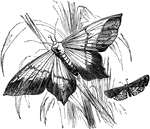
Swallow-Tailed Moth
The swallow-tailed moth (Ourapteryx sambucaria) and the many-plumed moth (Ourapteryx hexadactyla).

Human Flea
The human flea (Pulex irritans) is a parasitic insect that actually has several hosts despite its name.

Bacon Beetle (Dermestes Lardarius)
"They eat bacon, skins, and also attack each other. The perfect insect does no damage. Insects in this…
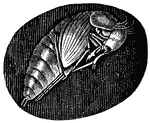
Pupa of the Hydrophilus Piceus
"At the end of two months the larva comes out of the water and burrows into the ground to undergo its…

Campylocnemis Schroeteri
"An Australian insect, of a bright black, which attains to more than an inch and three quarters in length,…
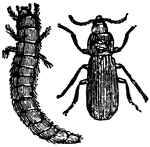
Tenebrio Molitor (Larva and Imago)
"A blackish-brown insect. The larvae are the well-known meal-worms, which live in flour."

Fire-fly
Illustration of a fire-fly commonly found in the West Indies. Its scientific name is Pyrophorus noctilucus.

Tobacco worm
"The caterpillar of which, commonly known as the tobacco-worm in the Middle States, is very destructive…

Cucuyo (Pyrophorus Noctilucus)
"An insect very common in Havana, Brazil, Guiana and Mexico. It may be seen at night in great numbers…

Stick Insect
The Phasmatodea (sometimes called Plasmodia) are an order of insects, whose members are variously known…

Ichneumon Fly
The Ichneumonoidea are insects classified in the hymenopteran suborder Apocrita. The super family is…

Larva
The larva of a weevil. A larva is a juvenile form of animal with indirect development, undergoing metamorphosis.
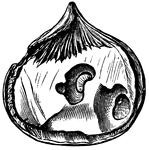
Larva in Chestnut
The larva of a weevil in a chestnut. A larva is a juvenile form of animal with indirect development,…

Pupa
Illustration of a pupa attached to a wall. A pupa (Latin pupa for doll, pl: pupae or pupas) is the life…

Pupa
Illustration of a pupa attached to a leaf. A pupa (Latin pupa for doll, pl: pupae or pupas) is the life…
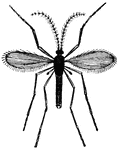
Hessian Fly
The hessian fly or barley midge, Mayetiola destructor, is a species of fly that is a significant pest…

Cricket
Crickets, family Gryllidae (also known as "true crickets"), are insects somewhat related to grasshoppers…
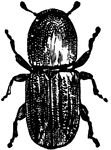
Bark Beetle
A bark beetle is one of approximately 220 genera with 6,000 species of beetles in the subfamily Scolytinae.…

Aphid
Aphids, also known as plant lice, are small plant-eating insects, and members of the superfamily Aphidoidea.…
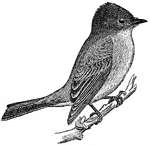
Phoebe
The genus Sayornis is a small group of medium-sized insect-eating birds in the Tyrant flycatcher family…

Kingbird
The genus Tyrannus is a group of large insect-eating birds in the Tyrant flycatcher family Tyrannidae.…

Phoebe's Nest
An illustration of a Phoebe's nest in a box. The genus Sayornis is a small group of medium-sized insect-eating…
Double-Toothed Prominent Caterpillar
The caterpillar stage of the double-toothed prominent (Nerice bidentata) showing its serrated back.
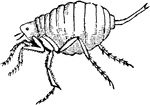
Chigoe Flea (Male)
The chigoe flea (Tunga penetrans) is a parasitic arthropod found in tropical climates, especially South…
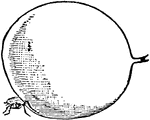
Chigoe Flea (Female)
The chigoe flea (Tunga penetrans) is a parasitic arthropod found in tropical climates, especially South…

Cochineal
An illustration of Cochineal living on cactus. Cochineal is the name of both crimson or carmine dye…
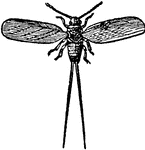
Cochineal (Male)
An illustration of a male Cochineal. Cochineal is the name of both crimson or carmine dye and the cochineal…
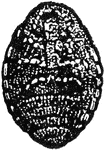
Cochineal (Female)
An illustration of a female Cochineal. Cochineal is the name of both crimson or carmine dye and the…
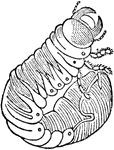
Cockchafer Larva
An illustration of a full grown cockchafer larva. The cockchafer (colloquially called may bug, billy…

Cockchafer Pupa
An illustration of a cockchafer pupa. The cockchafer (colloquially called may bug, billy witch, or spang…

Cockchafer
An illustration of a cockchafer. The cockchafer (colloquially called may bug, billy witch, or spang…

Scale Insect
"Scale-insect. Oyster-shell bark-louse of the apple (Mytilaspis pomorum); male. a, ventral view with…
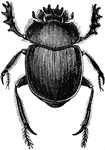
Dung Beetle
The dung beetle is an insect in the Scarabaeidae family and was a sacred icon to the Egyptians.

Scelio
Scelio is a genus of parasitic insects of the Proctotrypidae family. "Scelio famelicus. a, female; b,…
